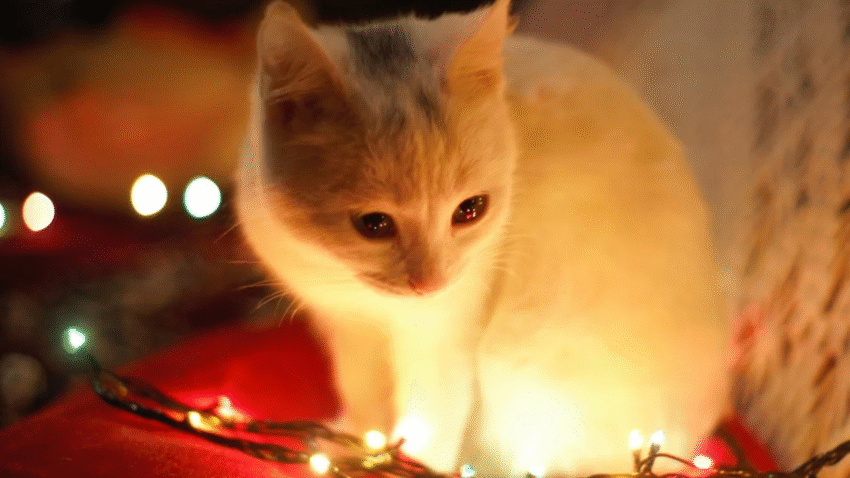Introduction
Struggling with a smelly litter box or a cat who refuses to use it? Maintaining a clean, odor-free litter box is essential for your cat’s health—and your own comfort. In this guide, you’ll learn how to keep your cat’s litter box clean and fresh with simple, proven techniques. From scooping schedules to litter choices and box placement, we’ll help you create a pleasant and hygienic environment for both you and your feline friend.
If your home smells like your litter box, it’s time to fix it—for good.
Why Litter Box Cleanliness Matters
Cats are clean animals by nature. A dirty or stinky litter box can lead to behavioral issues and even health problems if ignored.
Here’s why a clean litter box is important:
- Encourages consistent litter box use
- Prevents odors from spreading throughout the home
- Reduces the risk of urinary tract infections or litter box avoidance
- Creates a healthier environment for both cat and owner
Whether you have one cat or several, good litter box hygiene should always be a top priority.
Step-by-Step Guide to Keeping the Litter Box Clean and Odor-Free
Follow this easy maintenance system to keep your litter box fresh every day.
1. Scoop the Box Daily (Or More)
- Scoop waste at least once per day—twice is even better.
- Removing clumps promptly prevents odor buildup and keeps the litter usable longer.
- Cats are more likely to avoid a box that already smells or contains waste.
💡 Tip: Make it part of your morning and evening routine to stay consistent.
2. Use the Right Litter Type
Choosing the right litter can make a big difference in odor control.
Look for:
- Clumping clay litter for easy scooping and strong odor control
- Unscented varieties—some cats dislike artificial fragrances
- Activated charcoal or baking soda-enhanced formulas to absorb smells
Try a few options to see what your cat prefers—because if they don’t like the litter, they won’t use the box.
3. Replace the Litter Weekly
- Even if you scoop daily, completely change out the litter once per week.
- Wash the box with mild soap and warm water before refilling it.
- Avoid strong-smelling cleaners like bleach or ammonia—they can irritate your cat’s nose and lungs.
If you notice persistent odor before the week is up, increase your litter change frequency.
4. Clean the Litter Box Monthly (or More Often)
Do a deep clean at least once per month:
- Empty all litter
- Scrub with a non-toxic cleaner or vinegar and water solution
- Rinse thoroughly and dry before adding fresh litter
This helps remove built-up residue that traps odors over time.
5. Use a Litter Mat to Catch Debris
- Place a litter mat outside the box to catch stray granules and prevent messes.
- This keeps the area clean and reduces how often you need to vacuum or sweep nearby.
Mats with soft rubber spikes or grooves work well for trapping litter from paws.
6. Use Multiple Boxes in Multi-Cat Homes
- The rule of thumb: one litter box per cat, plus one extra.
- More boxes mean less traffic per box and less chance of overflow, odor, or disputes.
Place boxes in different rooms to give each cat their own “private space.”
7. Improve Box Ventilation
Poor airflow can trap odors near the litter box.
- Avoid placing boxes in tight, enclosed spaces like cabinets or closets.
- If using a covered litter box, remove the lid occasionally or switch to an open design for better airflow.
- Place a fan or air purifier nearby if the area tends to hold smells.
Good ventilation prevents odors from lingering or settling into fabrics and furniture.
8. Use Baking Soda or Deodorizers (Safely)
- Sprinkle a thin layer of baking soda at the bottom of the box before adding litter.
- Consider cat-safe litter box deodorizers (avoid anything heavily scented).
- Never use essential oils, strong chemicals, or harsh cleaners—many are toxic to cats.
Used correctly, these odor absorbers help keep things fresh between scoops.
Common Mistakes to Avoid
Here are common litter box issues that lead to odor and avoidance:
- Skipping daily scooping
➤ Waste left even for a day can cause strong smells and discourage use. - Using scented litter that irritates your cat
➤ If your cat starts avoiding the box, the fragrance may be the reason. - Using too little litter
➤ Keep a depth of 2–3 inches to allow proper clumping and coverage. - Not replacing old boxes
➤ Plastic boxes absorb odor over time—replace them every 6–12 months if needed. - Placing the box near food or water bowls
➤ Cats dislike eating near waste and may begin to avoid the box entirely.
Extra Tips & Recommendations
Want to go above and beyond? Try these odor-fighting upgrades:
- Use a high-sided box or litter box enclosure to prevent spills.
- Invest in a self-cleaning litter box if you’re often busy or travel.
- Try air purifiers with activated carbon near the box area.
- Keep a litter box log if your cat has urinary issues—you’ll spot behavior changes early.
Need more tips for daily routines? See our article How to Feed Your Cat on a Consistent Daily Schedule to support overall health.
Conclusion
Keeping your cat’s litter box clean and odor-free doesn’t have to be difficult. With regular scooping, the right litter, and a little extra attention, you can eliminate bad smells and keep your cat happily using their box every day.
🐾 Clean box, happy cat—and a fresher home for everyone.
